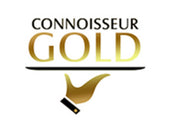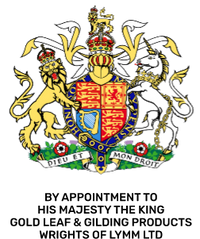Edible Gold Leaf Across the World - Germany
- by sam@wrightsoflymm.co.uk User
The History and Uses of Edible Gold Leaf in Germany
Edible gold has long been a symbol of luxury and extravagance. Across Germany, the use of gold leaf, or Blattgold, has a rich cultural and culinary history, evolving from its roots in religious ornamentation to a popular trend in fine dining and patisserie. In this blog post, we explore the journey of goldleaf in Germany, its traditional and modern uses, and the terminology you’ll encounter when discussing edible metals such as 24 carat gold, 23 carat gold, gold flakes, silver flakes, gold dust, and silver dust.
What Is Gold Leaf and Why Is It Edible?
Gold leaf refers to ultra-thin sheets of real gold, often hammered down to just a few microns thick. To be safe for consumption, edible goldleaf must be pure—either 24 carat gold or sometimes 23 carat, depending on the desired malleability and sheen. Unlike other forms of gold used in jewellery, edible gold contains no harmful impurities, making it safe for decoration in gourmet foods and beverages.
In German culinary and artisan culture, the terms commonly used for goldleaf and its variants include:
-
Goldflocken – Gold flakes, often used in beverages and desserts
-
Silberflocken – Silver flakes, a shimmering alternative to gold
-
Golddust – Finely ground gold dust, used for delicate accents
Most edible gold used in Germany is either 23 carat or 24 carat, ensuring purity and safety. Silver, while not as commonly used as gold, still holds a decorative place in many festive traditions.
The Origins: Gold in German Art and Religion
The use of gold leaf in Germany dates back to the Middle Ages, primarily in religious contexts. Monasteries and cathedrals across regions such as Bavaria and Saxony were adorned with intricate wood carvings and paintings covered in goldleaf, symbolizing divine light and heavenly glory. This tradition was carried out by Vergolder (gilders), artisans skilled in the application of gold to various surfaces.
Though these uses were non-edible, the reverence for gold set the stage for its symbolic presence in festive and ceremonial foods.
Gold Leaf Enters German Cuisine
The incorporation of edible goldleaf into food began to appear in Germany during the Baroque period, particularly among aristocrats. Gold was used to decorate desserts and drinks during elaborate banquets, often reserved for royalty or high-ranking clergy.
Traditional confectionery makers in regions like Nuremberg and Lübeck began to apply gold flakes and gold dust to marzipan and gingerbread (Lebkuchen), creating treats fit for kings. Over time, this practice trickled down into broader society, especially during festive seasons like Christmas and Easter.
Modern Culinary Uses of Gold Leaf in Germany
Today, gold leaf and gold flakes are widely used in German gourmet kitchens, pastry shops, and luxury beverages. Common uses include:
-
Cakes and desserts: High-end patisseries in Berlin, Munich, and Hamburg often use goldleaf to elevate chocolates, tarts, and cakes.
-
Cocktails and spirits: German-made liquors and champagnes are sometimes infused with gold flakes for visual effect and prestige. One well-known example is Goldwasser, a traditional herbal liqueur containing suspended 23 carat gold flakes.
-
Luxury dining: Michelin-starred restaurants across Germany use 24 carat gold leaf or gold dust to garnish foie gras, truffles, and even sushi, combining aesthetic appeal with the idea of indulgence.
-
Bakery innovations: From gold-topped pretzels to golden doughnuts, bakeries in cities like Cologne and Stuttgart experiment with silver flakes and goldleaf for Instagram-worthy creations.
The Role of Silver Leaf and Dust
In addition to gold, silver flakes and silver dust—known as Silberflocken and Silberstaub—are also used in German cuisine, especially in holiday pastries and festive table decorations. While 24 carat gold is often the go-to for opulence, silver dust offers a more subtle, cool-toned alternative that's equally captivating.
Legal and Safety Standards in Germany
German regulations allow the use of both gold and silver as food additives under specific E-number codes:
-
Gold: E175
-
Silver: E174
Only high-purity metals (typically 23 carat or 24 carat) are permitted, and they must meet EU food safety standards. Consumers can rest assured that edible goldleaf products sold in reputable stores or online are safe for consumption when labelled accordingly.
Final Thoughts: Timeless Luxury in a Modern Setting
Germany's relationship with gold leaf has evolved from religious reverence to modern luxury, where edible goldleaf, silver flakes, and gold dust add a unique sparkle to culinary creations. Whether you're a pastry chef, a home cook, or simply a lover of beautiful things, there's no denying the elegance that 24 carat gold or silver dust brings to the table.
So the next time you raise a glass of sparkling wine with floating gold flakes, remember—you’re participating in a centuries-old tradition of indulgence and artistry.






